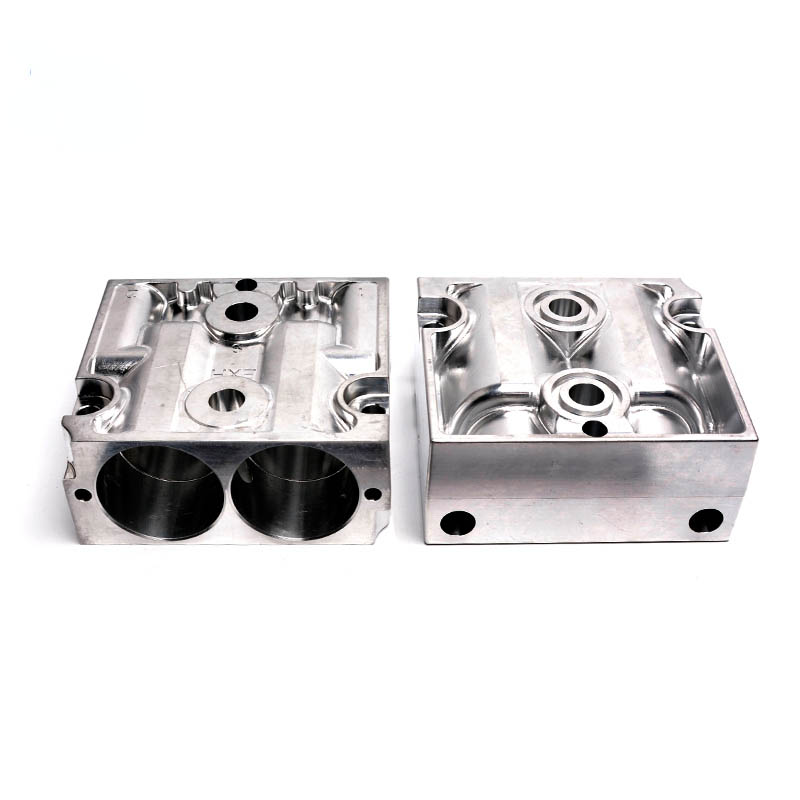CNC routers use X-, Y-, and Z-axis movements to position the cutting tool relative to the workpiece. The tool moves across the workpiece’s surface, cutting or engraving the material based on programmed instructions. CNC routers are available in various sizes, providing ample work area for handling sizable materials.
CNC mills operate similarly to their manual counterparts, utilizing rotary cutting tools to remove material. However, the movement of the cutting tool is controlled by CNC instructions, enabling high precision and repeatability. The cutting tools are rigidly attached to the machine, ensuring a CNC mill can cut even hard materials.

One of the differences between a CNC router and a CNC mill is the number of machining axes they may have. A CNC router typically has 3 axes of movement and may go up to 5 axes. A CNC mill can have up to 12 axes. For a refresher on the number of axes a CNC mill can have and what that means, check out 3-Axis to 12-Axis: CNC Milling Machine Capabilities Compared.
While both CNC routing and CNC machine milling require programming to execute desired machining operations, there may be differences in the software and programming languages used. CNC routers often use software that emphasizes ease of use, with graphical interfaces and simplified programming languages. This accommodates users with varying levels of technical expertise, such as those in the woodworking or sign-making industries. CNC mills, on the other hand, may employ more advanced software and programming languages that cater to the complex geometries and intricate toolpath calculations involved in metal machining.
CNC routers are widely used in the woodworking, sign-making, rapid prototyping, and cabinetry industries. They excel in tasks requiring intricate designs, 2D and 3D carving, and the ability to work on large workpieces. CNC routers will typically be utilized for less precise, less complex machining than what CNC mills will be used for. CNC mills do offer high accuracy and intricate detailing capabilities, making them suitable for artistic and decorative applications.
One of the most prominent differences between CNC routers and mills is the material they can cut. CNC routers can cut softer materials like wood, plastic, foam and non-ferrous metals like aluminum. They are less rigid than CNC mills, so they cannot transfer enough force to cut through harder materials.
On the other hand, CNC mills can cut through harder materials due to the rigidity of the machine head and tooling. CNC mills are compatible with stainless steel, titanium, aluminum, composites, and softer materials like aluminum or plastic.
CNC routers and CNC mills differ in speed and power. CNC routers are generally designed for lower to moderate cutting speeds, as they are commonly used for softer materials like wood and plastics. Then again, CNC mills are built to handle higher cutting speeds and heavier cutting forces, making them suitable for harder materials such as metals. CNC mills often feature more robust spindles and higher horsepower to accommodate these requirements.
CNC mills are typically built with a heavier and more rigid structure than CNC routers. This increased rigidity and stability allow CNC mills to withstand the higher cutting forces encountered during metal machining. While still rigid, CNC routers may prioritize lighter weight and portability, as they are often used for on-site or mobile applications.
CNC routers and mills use different cutting tools due to their distinct applications and material compatibility. CNC routers commonly utilize router bits with various profiles for cutting, shaping, and engraving wood, plastic, and composites. In contrast, CNC mills employ end mills, drills, and other specialized tools for precise metal cutting, drilling, and milling operations. The tooling options available for CNC mills are generally more diverse and designed to handle different types of metalworking tasks.
The cost of CNC routers and mills can vary significantly based on size, capabilities, precision, and build quality. Generally, CNC mills are more expensive due to their robust construction, higher power requirements, and specialized tooling. You should expect to spend several thousand dollars on a CNC mill, with high-end mills being several hundred thousand dollars. CNC routers, particularly entry-level or hobbyist models, may be more affordable and accessible for small businesses or individuals looking to work primarily with non-metallic materials. You can get a DIY CNC router for a few hundred dollars.
If you are outsourcing CNC routing or CNC milling, you should expect to pay more for CNC milling. The exact cost of your job depends on the material, the amount of material to be removed, the complexity of your design, and desired lead time, among other things.